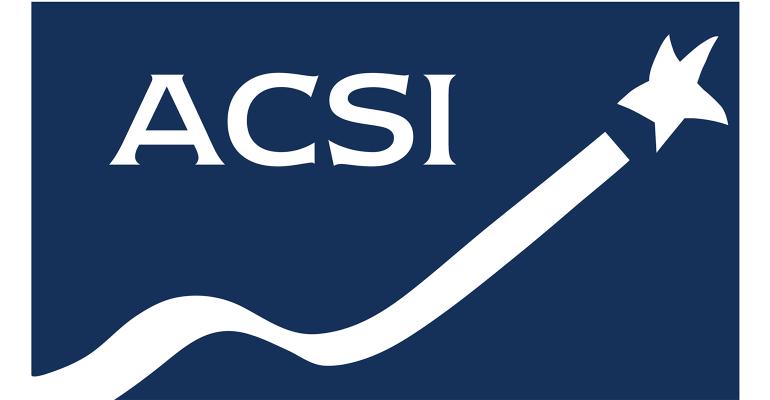Supermarkets are improving their standing amongst consumers in a volatile retail market, according to the latest American Customer Satisfaction Index (ACSI) Retail Report 2017, which was released today.
The survey ranks retailers on a score of 0 to 100 on a variety of topics and issues including convenience of a store location and hours, courtesy and helpfulness of staff, layout and cleanliness of store, availability of merchandise, and frequency of sales and promotions.
ACSI’s questions are designed to capture the range of experiences within each industry category.
“For supermarkets, the survey asks consumers to react to the shopping experience in terms of how well the supermarket provides a range of merchandise, availability of brand names, how well the shelves are actually stocked with the merchandise consumers are looking for, how good the supermarket is at providing sales and other promotions, and good, old-fashioned customer service as measured by availability of staff on the floor and at the checkouts, and their overall knowledge in friendliness/courtesy,” David VanAmburg, managing director at ACSI in Ann Arbor, Mich., told Supermarket News.
In 2017, customer satisfaction with supermarkets edged up 1.3% to 79, with nearly every food retailer included making gains. According to ACSI, the threat of competition from Amazon’s entry into the market appears to have spurred supermarkets to bolster their offerings.
 Publix once again ranked highest, with a score of 86, up 2% from 2016, closely followed by Trader Joe’s, with a score of 85. However, that was a 1% decline from 2016’s score of 86. Aldi and Wegmans were tied for third place with a score of 84, each up 1% from 2016.
Publix once again ranked highest, with a score of 86, up 2% from 2016, closely followed by Trader Joe’s, with a score of 85. However, that was a 1% decline from 2016’s score of 86. Aldi and Wegmans were tied for third place with a score of 84, each up 1% from 2016.
H-E-B had a score of 83, unchanged from last year, while Hy-Vee, Kroger and Whole Foods each had a score of 81. While Whole Foods was unchanged from 2016, Hy-Vee and Kroger were each up 3%.
![]() Ahold Delhaize showed the biggest percentage increase, 4%, climbing to a score of 79, tying it with Meijer, ShopRite and Target. Southeastern Grocers, operator of BI-LO, Winn-Dixie, Harveys and Fresco y Más, was up 1% to 78, followed by Supervalu with a score of 77. Albertsons Cos., Giant Eagle and Save-A-Lot each had a score of 76. Walmart was the lowest rated of the 22 surveyed chains with a score of 73, down 1% from 2016.
Ahold Delhaize showed the biggest percentage increase, 4%, climbing to a score of 79, tying it with Meijer, ShopRite and Target. Southeastern Grocers, operator of BI-LO, Winn-Dixie, Harveys and Fresco y Más, was up 1% to 78, followed by Supervalu with a score of 77. Albertsons Cos., Giant Eagle and Save-A-Lot each had a score of 76. Walmart was the lowest rated of the 22 surveyed chains with a score of 73, down 1% from 2016.
 VanAmburg noted that “73 is certainly a low retail score by any definition. The range of scores for all companies in all industries in ACSI is currently 56–87, while the national ACSI score is 76.7, and that of the retail sector specifically is 78.1,” he said.
VanAmburg noted that “73 is certainly a low retail score by any definition. The range of scores for all companies in all industries in ACSI is currently 56–87, while the national ACSI score is 76.7, and that of the retail sector specifically is 78.1,” he said.
“A score of 73 or lower is well below both the retail and national averages and significantly lower than even the lowest scoring retail industry – gasoline – at 76.”
ACSI found that satisfaction varied by geographic region.
“Generally speaking, across all goods and services, customers in the South tend to rate their satisfaction a little higher than those in other regions of the country, while the Northeast and West (essentially West Coast) regions tend to be the toughest to please customers,” VanAmburg said.
“However, these are fairly small degrees of difference,” he continued, “meaning while chains like Publix may benefit by a point or two of satisfaction from their geographic region, location will hardly explain much of the stark difference between, say, Publix at 86 and Walmart at 73, or even Meijer at 79. In other words, if the two chains were to swap geographies, Meijer might be an 80 and Publix an 85, but that’s still a very significant difference. The two stores are separated by a statistically significant gap regardless of geography.”
In addition to supermarkets, ACSI also examined health and personal care stores (drugstores); department and discount stores; specialty retail, including home centers, clothing and auto parts; and internet retail sites, where Amazon topped all of its competitors with a score of 85.
Overall, internet retail sites exhibited a 1.2% drop in customer satisfaction to 82, which ACSI attributed to several factors. Customers said checkout and payment was not as easy as it was a year ago (87), but it still remains the most satisfying part of the online shopping experience. Product images are not as useful (84), nor are customer-generated reviews (79), down 2% from 2016.
Variety (84) and availability of merchandise (82) are down for internet shoppers, and shoppers are losing appreciation of shipping options, down 2% to 81. The least appreciated aspect of online shopping is site-generated product recommendations, which dipped 4% to 75.





